Let me begin by telling you all about a compelling process that happens all around the world, constantly. It’s an age-old story without which human and primate existence would not have been possible.
It begins when every month or so the uterus goes through changes in the endometrium, the cellular lining within its cavity, for it to prepare nurture a probable conceptus (fertilized ovum or zygote), which if the odds favor, may turn out to be a human baby one day. But the sad part in this story, with relation to the readily awaiting endometrium, is that the ovum is not always fertilized. So the poor endometrium which used up so much protein and nutrients for it to thicken up, under the influence of hormones, sheds itself and bleeds out through the vaginal orifice. The process repeats itself after almost a month. This, my friends, as you may have already guessed, is the process of menstrual bleeding. Completely natural and involuntary when it comes to the human female body and ends only when women reach old age.
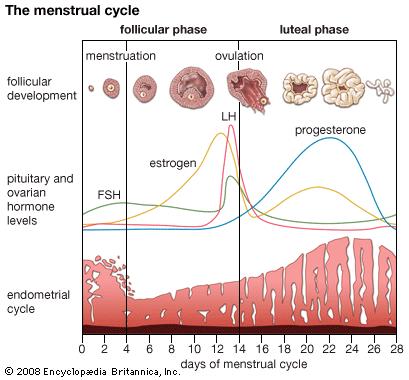
The Urban picture
To start from somewhere, let’s do so from the women that I happen to know. My mom happens to have a bachelor’s degree in economics and social science and my sister is in her first year of medical school. As I live in a privileged part of this country, I come across female relatives, family friends, colleagues, co-workers, nurses and friends in everyday life, all who have been educated beyond high school, many even holding scientific or healthcare degrees. These are well educated women. But if you go on to ask them whether they enter the puja kotha for worship or at minimum even touch the refrigerator during their menstrual bleeds, you’ll be surprised that most of them will admit that they don’t.
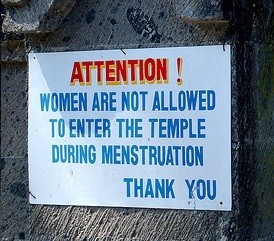
Most of the time, I go on to further explain, that hygiene practices as proposed by the ancients should be considered in light of the fact that they had very limited knowledge about proper hygiene and tampons weren’t even invented then. But why do we need such practices now, in the 21st century, when you can get tampons for prices as low as Rs. 10 (10¢) and women can be simply taught how to look after their hygiene? [Read about Muruganantham, a man who invented cheap tampons in India] I add, that if they need rest, they could very well take any day/time off just like that; why wait particularly for periods and what has rest got to do with an act as benign as simply touching the fridge? And regarding the fridge containing offerings to some deity, for a believer such as my mom, aren’t women considered creations of the same supernatural force in Hinduism? So why would a supposed ‘creator’ ever be angry with her for simply touching the offerings? Here, obviously I get confronted with answers full of ad-hominem; as well as those containing arguments from authority and not to forget, God!
Perhaps it’s due to my constant questioning and maybe even my mom and sister being tuned to urban life, we have over the years become much progressive compared to what we were in the past and also when compared to other average families in the city. This is because except for the fridge and the puja kotha, my mom and sister touch almost everything else for convenience. Different families have different levels of norms when it comes to menstrual taboo in urban Nepal. Especially joint families with elderly members tend to be the most conservative with stricter rules imposed such that the women are not even allowed in the kitchen let alone touching the refrigerator. Another big irony is that I also happen to know many aunts and relatives residing abroad who enforce such taboo onto their daughters who are not even born in Nepal!
One could wonder how and why these practices came into effect in the first place? To that I’d answer; it is partly influenced by religion and partly by a deeply etched culture of superstition and misogyny. This aptly describes the Nepali society, at least in stereotype. In short, women are being discriminated for something that happens to them naturally. To me, it’s as irrational as ostracizing people for defecation or urination, but unlike such semi-voluntary reflexes, menstrual bleeding is not a reflex and definitely not voluntary.
The Rural picture
The picture in rural areas, is quite drastic. The untouchability factor being constant, though greatly amplified. I am referring to practices, such as those in rural parts of western Nepal, as the Chhaupadi (Nepali: छाउपडी). Here, a menstruating woman is known as a Chhau or Chhui which means ‘untouchable’ and Padi refers to ‘cow-shed’. Judging by the name, it’s literally the practice which considers menstruating girls and women untouchables and sends them to live in the cow-shed.
In Chhaupadi, a girl has to sleep out in the cowshed, away from her family for the length of her bleeding. She cannot touch other people in her family as it is believed that doing so will make those people fall ill. She cannot consume milk as it is believed that doing so will result in the cattle or buffalo to cease lactating; she cannot consume legumes or bread as doing so is believed to mar the crops and invite famine. Same goes for fresh fruits and vegetables. So she has to survive only on plain rice, salt and dry fruits; all when during her bleeding she requires more nutrients than usual as she is losing blood from her body.
A survey report [AWON, 2012] carried out by Action Works Nepal across different VDCs in Jumla and Kalikot from mid-western Nepal, showed that among the 88 girls interviewed,
- 77% were following Chhaupadi when they bled for the first time (menarche) and none of them were allowed to stay in the same room with rest of the family members (especially male members)
- 70% were not allowed into the kitchen
- 19% said they were restricted from the schools
- 76% of them reported restriction in eating and drinking milk and other milk/dairy products.
- 80% were not allowed inside temples
- 77% were not allowed inside prayer rooms
- 64% percent respondents reported restriction in eating holy foods
- 51% respondents mentioned restriction in eating meat and meat products
- 28% reported restriction in eating vegetables
- About 20% respondents informed that they never attend school during the menstrual period, because of
- restriction by parents (28%)
- self-hesitation.
- 76% said that Chhaupadi was mostly imposed on them by their parents, priests or traditional healers (76 %).
- 77% women and girls said they felt insecure during their stay in cowshed
- 65 % women and girls said they cried in each period, afraid from possibility of sexual abuse, rape, snake and animal bites.
Chhaupadi is a matter of grave concern in terms of social equity and women’s health in a sense that it firstly is deteriorating to women’s health as it deprives them of the necessary nutrients they need during their periods. Secondly because it puts young girls and women at risk of pelvic infections and sepsis due to bad menstrual hygiene practices (as they stay away from their mothers and school and have been known to use the same cloth multiple times out of embarrassment) and lastly because it violates their right to live a free and just life. It’s one cruel ritual, second only to the sati pratha.
Despite the practice being prohibited by the Supreme court of Nepal in 2005, it is still practiced by the majority in rural sections of western Nepal. Strong belief preservation in addition to poor infrastructure as in roads, lack of effective law enforcement, paucity of schooling and pathetic literacy rates (especially that of women) being responsible. Multitude of NGOs and INGOs however, have been actively involved in spreading awareness against such ill practices with an aim to abolish the Chhaupadi tradition, some with good progress and some even without any.
The Chhaupadi may be one of the many extreme forms of Hindu menstrual taboo, but one element stays common to both urban as well as rural forms: The concept of women being untouchable during their periods. So it can be fairly said that it is not sufficient to just educate women as we can witness a significant number educated urban women practicing menstrual taboo regardless of their academic qualifications. I believe it is equally important for us all and especially activist women to make an effort to simply debunk such practices and to question them on a constant basis, starting from the city itself. Then only will it be possible for us to simultaneously take effective nation-wide actions to abolish practices such as the Chhaupadi. This has to be in a similar way as to how our society abolished the Sati pratha altogether, i.e starting from the city and the intellectual elite, such that now it is considered immoral regardless of religious belief.
The Global picture and psychological appeal of humans to purity
It’s not just in Nepal and India where menstrual taboo exist. We can find them in one form or another, more or less trying to depict the same superstition or fears across many different cultures world-wide. Just have a look at the two pictures below.
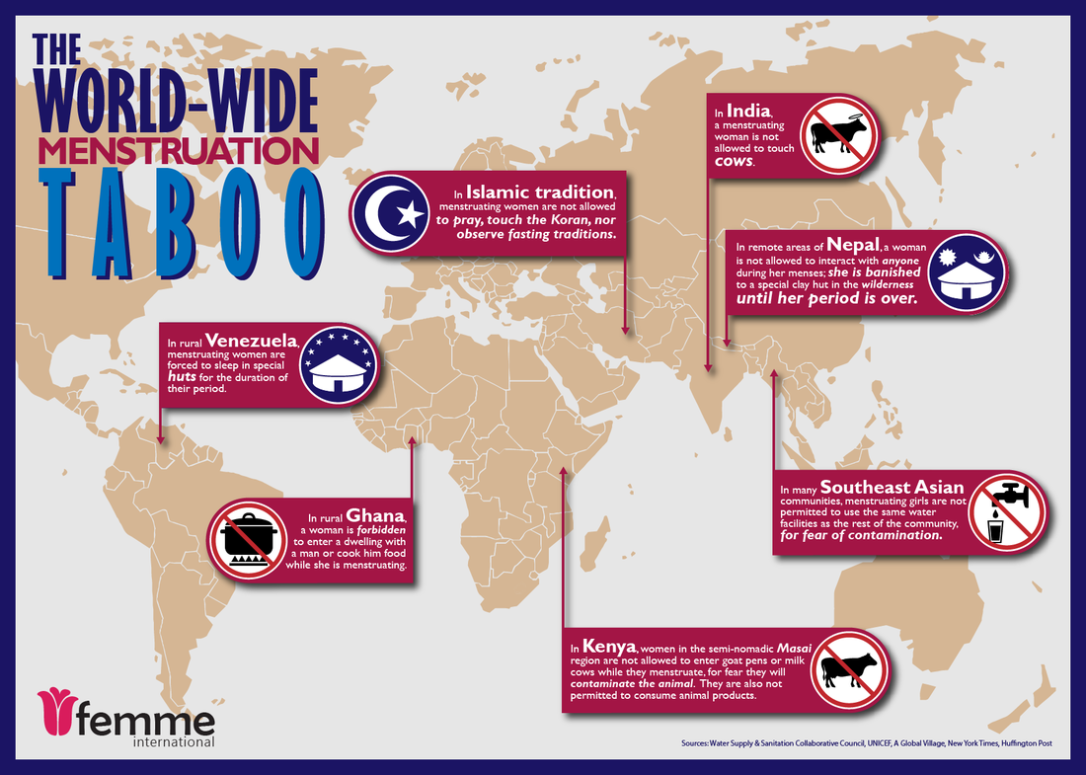
It could be said that menstrual taboo always arise out of misogyny and superstition embedded within the society potentiated by either an inherited culture or religion or both. It may be true to a great extent, but most of the time people tend to leave out one core aspect of human psychology which significantly contributes to preserving menstrual stigma around the world: the psychology of purity and cleanliness.
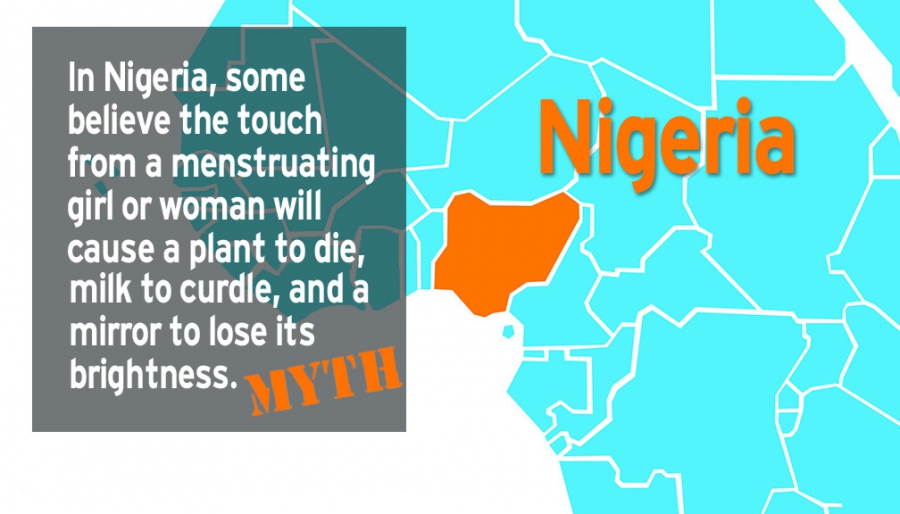
“A great example of how potent a force your unconscious can be was detailed by researchers Chen-Bo Zhong at the University of Toronto and Katie Liljenquist at Northwestern in a 2006 paper published in the journal Science.
They conducted a study in which people were asked to remember a terrible sin from their past, something they had done which was unethical. The researchers asked them to describe how the memory made them feel. They then offered half of the participants the opportunity to wash their hands. At the end of the study, they asked subjects if they would be willing to take part in later research for no pay as a favor to a desperate graduate student.
Those who did not wash their hands agreed to help 74 percent of the time, but those who did wash agreed only 41 percent of the time. According to the researchers, one group had unconsciously washed away their guilt and felt less of a need to pay penance. The subjects didn’t truly wash away their emotions, nor did they consciously feel as though they had.
Cleansing has meaning beyond just avoiding germs. According to Zhong and Liljenquist, most human cultures use the ideas of cleanliness and purity as opposed to filth and grime to describe both physical and moral states. Washing is part of many religious rituals and metaphorical phrases used in everyday language, and referring to dastardly deeds as being ‘dirty’ or to evil people as ‘scum’ is also common. You even make the same face when feeling disgusted about a person’s actions as you do when seeing something gross. Unconsciously, the people in the study connected their hand washing with all the interconnected ideas associated with the act, and then those associations influenced their behavior.”
Just like the point I made earlier in this blog on the ancients’ perception of hygiene, people in the past most likely related menstruation and the bleeding associated with it as being disgusting or unhealthy or abnormal. I suspect that it is this subconscious priming in par with people’s tendency towards superstitious thinking (i.e post-hoc reasoning; something happened after this so must be because of this) and misogyny prevalent within patriarchal cultures (majority of human cultures being patriarchal) which is responsible for the perseverance of menstrual taboo around the world and Nepal.
Knowing just this should have given us all the more reasons to cease condoning or conforming to such age-old practices. But at least in south asia, the context can be slightly different and most of the time taboo can be glorified or potentiated especially by educated people who look for profound explanations supporting menstrual taboo, assuming about their explanations being scientific.
Pseudoscience, postmodernism, and belief preservation.
No matter how educated people may be, many constantly find biased explanations and reasons to follow menstrual taboo. Most refer to scriptures and ancient literature such as the Vedas, Gita, Upanishads, Pali Teachings, Manusmriti, Quran and the Hadith in order to justify their beliefs or claims. They tend to think that there are many ways of knowing something other than mainstream science and rationality (which they call western or material). They tend to justify ancient practices which have no basis in reality by conjuring up simplified or complex words or doctrines to describe them. Such type of people are known as postmodernists and postmodernism is nothing but an emotional reaction to any kind modernity by romanticizing about the past.
One such blogger, who ironically happens to be a woman, tries to justify menstrual restrictions by referring to words of random sages and ancient practises such as Ayurveda, goes by the name Mythri. The striking fact is that this author and her organization is actively involved in promoting women’s health across many parts in India. Below are some selected excerpts from her blog, Unearthing menstrual wisdom – Why we don’t go to the temple, and other practices:
“I realized that most practices arise from a common ground – Ancient Indian Science, which includes Ayurveda, Yoga, Meditation, Mantra and Astrology. The science of Mudras, a part of Yoga, is also important in this understanding.”
“Western allopathic medicine which is a few centuries old is based on external medication and intervention. Whereas Ayurveda which is at least 7000 years old, is a science of life and a natural healing system, with a deep understanding of the human body and its relation to nature. Ayurveda is based on the principles of three primary life-forces in the body, called the three doshas. Doshas are the bio-energies that make up every individual, and help in performing different physiological functions in the body. The three types of Doshas are Vata, Pitta and Kapha, which correspond to the elements of air, fire and water respectively.”
“According to Ayurveda, menstruation is closely linked to the functions of the doshas. Menstruation is regarded in Ayurveda as a special opportunity enjoyed by women for monthly cleansing of excess doshas; it is this monthly cleansing that accounts for female longetivity. There is a build up of energy in the days leading to menstruation as the body prepares for pregnancy. If pregnancy does not take place and menstruation starts, this built up energy gets dissipated from the body during menstruation. During menstruation,Vata is the predominant dosha. Apana vayu, one of the elemental air functions of the Vata Dosha, is responsible for the downward flow of menstruation. Therefore, any activity that interferes with this necessary downward flow of energy during menstruation should be avoided. During menstruation, women are more likely to absorb other energies in their environment. This forms the basis of most of the cultural practices around menstruation in India.”
“the energy during menstruation goes downwards into the earth, (at the puja table, offerings, altar), the energy is going upwards. This can bring discomfort in the body”
She blatantly states that mainstream science is ‘western’ when empirical observations of nature do not have any cultural affiliations. It’s just because many empirical observations of nature were first noted by westerners that many people out here wrongly associate science with the west. She has given too much room for Ayurveda and ancient scriptures and practices being valid when, in fact, they clearly lack significant rational and scientific elements in their attempts at explaining nature.
Her argument is based from a preconceived bias that the logic behind Ayurveda and Vedas are sound and that they are a ‘different’ kind of Science than mainstream science. But to be intellectually honest, there is only one kind of science: the one that describes nature objectively. Because truth is universal, objective and bears no other alternative.
So I can fairly say that she is wrong.
Allopathic medicine, during the time of Hippocrates also had irrational practices of bloodletting and was based on the principles of ‘humors’, similar to doshas. Chinese medicine also evolved separately and included the concept of ‘energy’ centres similar to ‘chakras’. Contemporary understanding of science and empirical data were poor back then so all cultures had their own ways of interpreting nature, and not all of them were accurate. Allopathic medicine, proved to be the most successful of them lot due to its adoption of logical thinking skills and evidence-based practices. It can be fairly said that allopathic medicine smoothly entered the realm of science to progress when Ayurveda and chinese medicine never did.
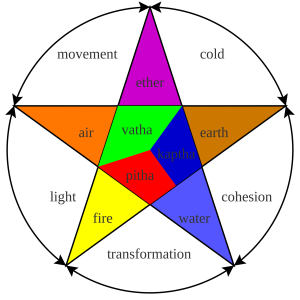
As far as menstruation is concerned, it is a natural process best explained by modern mainstream medical science staying in touch with evidence. It’s nothing but the uterus shedding its cell lining in the absence of a fertilized ovum. There can be found no evidence for this ‘imbalance of doshas’ as proposed by ayurvedic practitioners.
She goes on to further explain about her interview with a certain Guruji (Religious leader). Here, according to her, the Guruji explains why women should not enter temples during menstruation.
“To further understand the aspect of not visiting temples during menstruation, our team travelled to Devipuram, in Andhra Pradesh. We found unique answers from Sri Amritananda Natha Saraswati (Guruji), founder of Devipuram, a temple in Andhra Pradesh which is dedicated to the Devi.
He said “What is pure, we don’t touch. And what we don’t touch, we call it a Taboo. She (a menstruating woman) was so pure, that she was worshipped as a Goddess. The reason for not having a woman go into a temple is precisely this. She is a living Goddess at that time. The energy of the God or Goddess which is there in the murthi (idol) will move over to her, and that (the idol) becomes lifeless, while this (the menstruating woman) is life. So that’s why they were prevented from entering the temple. So it is exactly the opposite of what we think”.
Seriously? How does he even know what this energy is? Can we even measure it? If not then why call it energy in the first place and how is it not different from any other unfalsifiable claim in the market? People such as this guru tend to conjure up esoteric and confounding words in order to create circular arguments to justify their means. Just have a look at this particular explanation she provides in the same blog as to why menstruating women should avoid cooking and eating with others during menstruation.
“As told to us by a pranic/energy healer, eating was considered as a spiritual activity. Many orthodox Brahmins even today chant as they cook to ensure that the food has higher and positive energy in it. During the process of eating food, the lower chakras (read explanation at the end of this paragraph) of our body are highly active. It is to change this, that Buddhist monasteries have a practise of reciting the scriptures during meal hours, so that the monks are focussed on higher chakras. So while eating, people expel negative energy all around. In the normal course of things, we would not feel it. But if a menstruating woman who is sensitive to absorb all types of energies around her is in the middle of a group that is eating, she can get affected by the lower energies (as opposed to higher or spiritual energies, which are beneficial). This is probably the reason why menstruating women were told to stay away from others and eat separately.
“As explained by spiritual and Ayurveda teacher Maya Tiwari, in her book Women’s Power to Heal: Through Inner Medicine:“Asking women to avoid gardening or cooking during menstruation is not due to the irrational thinking that our menstrual blood is unclean, unhygienic or toxic. The cosmic memory of food – that which is derived only from plant life according to the Vedas – is imbued with prana, a rising energy flowing up from the earth towards the sun and the sky. Conversely, our menstrual blood is instilled with apana vayu, the downward flowing, bodily air pulled down from the body by the magnetic forces of the earth. These two powerful sadhanas do not go hand in hand. Plant-derived food is also kapha in nature, full of youth giving energy that nourishes the body; menstrual blood is dominated by Pitta and Vata, which fosters the cleansing of the spirit. It is most unwise to introduce the rising, energizing nature of our food into our blood, or to mix the downward flowing, cleansing energy of blood into our sustenance, either by preparing food during menstruation, or by slaughtering animals and eating them.”
I read her entire essay with the hope of finding at least something worth consideration, but since she has based it entirely on her bias that ancient knowledge (ayurveda, astrology etc) is scientific knowledge, the whole argument falls apart logically for us to even reach an empirical conclusion. She claims to have unearthed menstrual wisdom, but infact she has managed to cover up actual truth with truck load of dirt, is all I can say. I won’t even care to refute her claim of the downward and upward energy in detail because going by this logic, even urinating, sneezing, defecating, spitting, sweating, shedding of dead skin cells could be considered downwards energy and that even the people who sweat should be barred from sacred places and shunned from the society. It is very absurd and definitely irrational.
Such flawed reasonings used to justify menstrual taboo, that too from someone involved (in her words) in a ‘Trust working on various issues pertaining to women and children such as menstruation, sexual abuse and sexual violence against women’, is quite unsettling as well as troubling. It is mostly people like her who pose the danger of spreading misconception in the public and misleading them.
Menstrual taboo flourish along with other kind of superstition and dogma in a society full of misinformed and mislead people because irrationality often feeds on ignorance. Retrospective explanations from authority and tradition such as that given by people like Mythri could be one reason as to why menstrual taboo is prevalent even among the educated in urban areas. And if we cannot expect the educated to see through their preserved beliefs, how can we expect it from the less educated in rural communities?
What can we do to abolish menstrual taboo?
We need to talk more about menstruation and reproductive health. The talking needs to be done repeatedly unless and until our society as a whole starts to take menstruation as something that occurs naturally and is benign, say like sweating. Everywhere, from cities to towns to rural villages, it is important that we display in public (through public, government or commercial advertisements) that menstruation is something very natural when it comes to women.
To spread awareness might be the initial step, but in order to tackle the intellectually dishonest who try to create a benign perception of such taboo, we need to logically and scientifically examine every claim made by every proponent as far as possible.

We need to reach out to every girl and every woman. All of us, along with women who are concerned with other women’s rights being violated, should make it an effort to engage in debates and argument in all factions of our society just to answer the inquisitive minds and to break the stigma associated with menstruation. It is vital that we deliver the right kind of thinking skills and teach people (especially the children) both in urban as well as rural areas to search for unbiased information on any matter including menstruation so that they can think for themselves and become less likely to condone age-old practices.
Men also have a great role. People tend to think that menstruation is simply a woman’s problem and so it is best left for the women to fight against or to speak out against; and men need not speak out about it. But that is wrong, men do have to speak out against it more often than ever, and have to actively take part in discussions on menstrual stigma or taboo. This is because at this point in history, we need more rational voices than ever before as many complex forms of irrational voices are trying to silence the righteous.
Only then can we effectively abolish the stigma and taboo associated with menstruation. We definitely need to scrap this file and put it in the archives of history, never to open, alongside that of the Sati.
So ladies, in the end, all you have to do is work towards shaping a society which accepts and allows you to bleed freely. Moreover, it would be best for future generations, if you could just as well bleed out the nonsense….
Reference and further reading
- Menstrual Taboo: Hibernating but Hindering factor of Women’s Empowerment in Nepal: By Radha Paudel
- Chhaupadi, Jumla, Kalikot Action Works Nepal 2012 report
- AWON & 5-CP report on Chhaupadi in Kalikot 2012
-
Blood speaks: Menstrual taboos in Nepal and Bangladesh put women’s health at risk
-
SC questions practice banning entry of women at Sabarimala temple
-
‘We bleed. Accept it and deal with it’: breaking India’s taboo on menstruation – Monisha Rajesh
- Periods in Nepal, Turning girls into untouchables
- Menstrual Taboo: Huffpost Archive
-
The ‘Tampon King’ who sparked a period of change for India’s women
- The ‘untouchables’: Tradition of Chhaupadi in Nepal; TIME magazine
- Culture clash, menstrual taboo and ODF in Nepal
- Menstrupedia.com
Fact to consider: [Menstrual cycle is seen specifically in Humans, some primates, some species of bats and shrews. In other mammals, uterine cycles are of varying periodicity and thus known by other terms.]

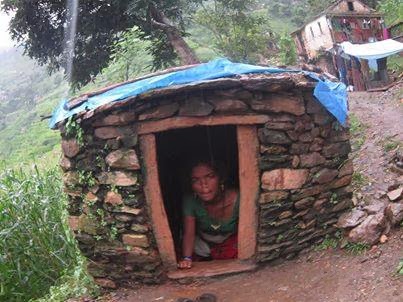

In Orthodox brahmin families, women are not allowed to cook, go to temple or touch anyone. The saddest thing is that people conform to these superstitious practices without knowing whether or not they’re true. Their excuse is, “its tradition. Our ancestors might have had good reasons.” They never try to find out what it is.
LikeLiked by 1 person
A thorough piece on an interesting and worthwhile site, will follow. Thanks for following my site too.
LikeLiked by 1 person
It’s amazing how varied the experience of periods can be for women around the world, and even from one part of a country to another. I’m from the US, and I knew a girl in college who had a horrible experience when she first got her period because her mother was completely unavailable to help her make sure she had the sanitary items she needed. I’ve heard similar stories from other American women too (not people I know, just stories I’ve read) whose families had a taboo against talking about menstruation. This made them too uncomfortable to tell anyone that they had gotten their periods, so they hid it for as long as they possibly could until they had to admit that they needed help getting products. I on the other hand had a totally uneventful experience. I had been told what to expect several years beforehand, and when it happened I had the sanitary products I needed. There are definitely some negative things about menstruation in the west, like you mentioned, with our use of blue liquid in tampon and pad commercials and the way many people stereotype menstruating women as angry. What I find particularly frustrating is that in my country, some states actually tax tampons as a luxury item, which is ridiculous. That’s like taxing a tooth brush or toilet paper as a luxury. But at the end of the day we are very, very fortunate here. I’ve never heard of anyone in my country being forced to sit outside in a shed for a week every month, or forbidden from entering a temple or the kitchen. Hopefully with education more people worldwide will start to accept that women are perfectly fine going about their day to day lives every week of the month.
LikeLiked by 1 person
Education which teaches to question everything and remove our biases.
LikeLike
Reblogged this on चेतनशील युवा समूह, सामुहिक रचना पाटी.
LikeLiked by 1 person
Hey i’m muslim. And in regards to the map picture where it’s mentioned what women are “forbidden” to do during menstruation, i should clearify it since it’s out of context.
In order to do acts of worship such as praying or reading the quran a person first has to purify themselves doing what is called Wudu which is minor, or Ghusl which is major, no matter it’s a woman or a man.
What brakes our state of purity?
These require Wudu
-Any waste, liquid or solid matter coming out of the anus and similar (urine, feces, sperm, intestinal gas etc). -Blood, pus, yellow liquid etc flowing from any part of the body. (tears and running nose due to the cold are do not break wudu)
-Vomiting
-Sleeping or fainting, because both make you loose control over yourself and any of the previous mentioned could happen.
These require Ghusl
– Undergoing any physical change (after falling unconscious, cupping therapy etc)
– After sexual intercourse
-After erotic dreams which makes the body expel coital fluids
-Before important acts of worship
– Before meeting someone (special days for instance)
– On every friday
– When someone becomes muslim
– After the period
So as we can see the period is a stage of impurity which has nothing to do with being a woman but it’s simply a condition where the sexual organ can not be kept from bleeding so it becomes not clean.
Fasting is an act of worship which cannot be performed if one does not pray and the obligation (of both praying and fasting) is not upon the menstruating woman in view of the fact that she can’t control over her bleeding which breaks the condition of purity. And in any way a woman is not capable of fasting during her period, pregnancy, or lactation for health reasons. However she can recover those daysand fast on them later. And of course she can read the quran using a piece of cloth or gloves.
I think in that picture there is something missing: the Venezuela and Nepal thing are just a derivative of the bible scriptures, specially the old testament, where you find that in judaism a woman is considered impure herself and whatever she touches becomes impure so they use to kick them from their homes untill the period is gone.
This picture mostly wants to portray all countries and religions that don’t generally involve white people as retarded societies.
LikeLike
Islamic culture is perhaps the most regressive of all, not in menstrual terms but in other. The most segregated group of women on earth are indeed islamic women, who are forever subjected as sex slaves to their husbands and are kept hidden (and when a country follows the sharia, are even not allowed to drive). So it’s very hypocritical of you to take a dig at “white” cultures. FYI, i’m not white.
LikeLike
By the way, in Islam the prophet muhammad sws prohibited men to divorce their wives during the period because of their emotional status during those days, and gave an example of how to treat a menstruating wife laying beside her with his head on her laps, reciting quran to her, and still being kind and loving toward her.
LikeLike
Can you provide evidence for your statement?
LikeLike